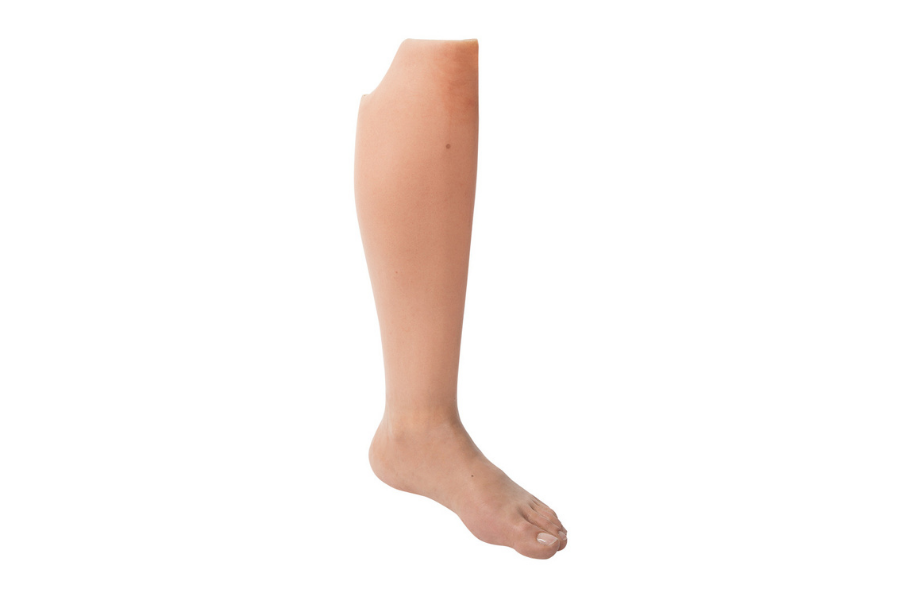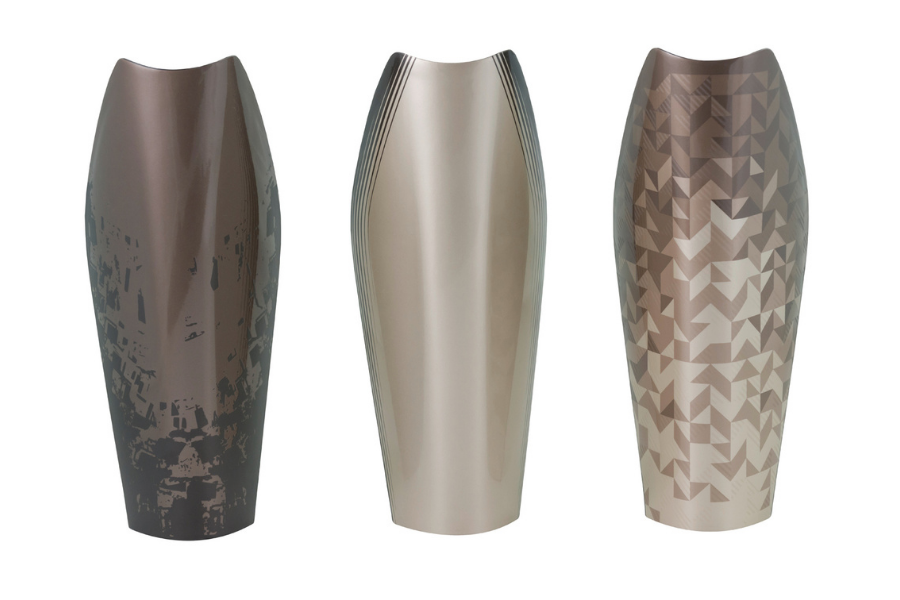3 covers for your prosthetic leg
Some people prefer their prosthetic leg to be as inconspicuous as possible, while others love showing off. How can you put the finishing touches to your prosthetic leg? Here are three options for prosthetic covers.
Please note that not all covers are compatible with all prostheses. Always consult your O&P professional to find out more about your specific options. They can also tell you more about your options for reimbursement and payment plans.

1. Natural look: foam or silicone cover
Expert by experience Cécile prefers a natural look, which is why she wears a cosmetic cover made of foam over her prosthetic upper leg. A cosmetic cover gives your prosthetic leg the same shape as a human leg and is worn over your prosthesis. The cover is made of foam and is painstakingly modelled after your leg by your O&P professional.
Cosmetic covers often come in multiple skin tones, but because they’re made of foam, they don’t look particularly lifelike. In terms of shape, however, cosmetic covers do resemble a ‘normal’ leg, so if you’re wearing yours under clothes, people might not realise you’re wearing a prosthetic leg at all. Cécile, for example, wears tights over her cover whenever she feels like wearing a skirt. Cosmetic covers are available for prosthetic upper legs and lower legs.
Please note that a cosmetic cover is not the same as an anatomically shaped silicone leg cover. A silicone leg cover is completely custom made and modelled after your other leg, giving it a lifelike appearance including freckles and veins. Every silicone cover is entirely unique and bespoke, made specifically for your prosthetic leg. Want to know more? To find out more about your options, we recommend getting in touch with your O&P professional.
Recommended read: 3 tips for a better relationship with your O&P professional.

2. High-tech look: plastic cover
If you like the look of a high-tech prosthetic leg, a plastic cover may be just what you’re looking for. These plastic covers are compatible with many different advanced prosthetic knee joints and protect the joint against damage, wear and tear. Because these covers are made to fit your prosthesis, your freedom of movement will not be hampered in any way.
Cosmetic covers made of plastic are made to be worn as is, so do not need to wear a foam cover. Plastic covers often create a more high-tech look, but they are, usually, anatomically accurate for a more natural look when worn under clothes. You can sometimes find different versions of plastic covers for each prosthesis and they can often be shortened for an optimal fit.
3. Unique look: personalised cover
Want to take things one step further? Why not have your cover personalised?! There are several companies out there that make unique prosthetic covers. UNYQ is a well-known example that makes lightweight covers for all kinds of prosthetic lower and upper legs. With a cover like this, you can turn your prosthesis into a real fashion accessory. Everything’s possible, from bright colours to fancy patterns and textures. Curious about all your options? Head to Instagram and search for #prostheticcover for countless extraordinary examples.
Recommended read: Form or function: What’s most important to you?
How do you cover your prosthesis? Are you satisfied as is, or would you like to try something new? Share your thoughts in the Movao forum!